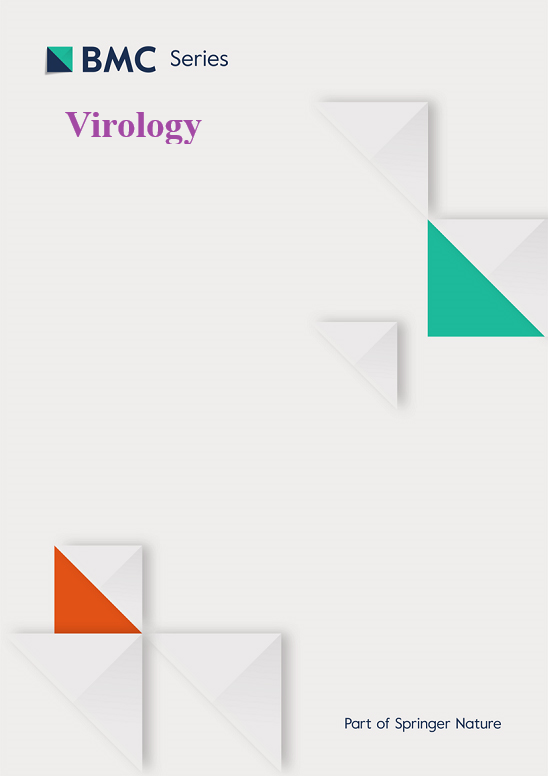Nanopore sequencing-based measurement of paramyxovirus RNA editing reveals virus-specific differences in editing efficiency of mRNA, antigenome and genome
IF 2.8
3区 医学
Q3 VIROLOGY
引用次数: 0
Abstract
Paramyxovirus polymerase recognizes an RNA editing signal on the viral genome and transcribes mRNA in which guanine nucleotides are inserted in a template-independent manner. This enables the synthesis of multiple proteins from a single gene, which is important for viral growth. We developed a method to quantify RNA editing efficiency using Oxford Nanopore Technologies’ MinION platform. We performed sequence analysis of reverse transcription-PCR amplicons with the RNA editing sites in cells infected with Sendai virus (SeV) and canine distemper virus (CDV). By modifying reverse transcription primers, we simultaneously assessed RNA editing efficiency in mRNA, antigenome and genome. We observed distinct differences in mRNA editing efficiency between SeV and CDV. Notably, while RNA editing in SeV is confined to mRNA, in CDV it is also observed in antigenome/genome. (Anti)genomes harboring extra nucleotides may deviate from a multiple-of-six sequence, suggesting that RNAs not following the “Rule of Six” are produced in CDV-infected cells.
基于纳米孔测序的副粘病毒RNA编辑测量揭示了病毒特异性mRNA,抗基因组和基因组编辑效率的差异
副粘病毒聚合酶识别病毒基因组上的RNA编辑信号并转录鸟嘌呤核苷酸以不依赖模板的方式插入的mRNA。这使得单个基因能够合成多种蛋白质,这对病毒生长很重要。我们开发了一种利用Oxford Nanopore Technologies的MinION平台量化RNA编辑效率的方法。我们对仙台病毒(SeV)和犬瘟热病毒(CDV)感染细胞的RNA编辑位点逆转录- pcr扩增子进行了序列分析。通过修饰逆转录引物,我们同时评估了RNA在mRNA、抗基因组和基因组中的编辑效率。我们观察到SeV和CDV在mRNA编辑效率上存在明显差异。值得注意的是,虽然SeV中的RNA编辑仅限于mRNA,但在CDV中也可以在抗基因组/基因组中观察到RNA编辑。含有额外核苷酸的(抗)基因组可能偏离6个中的多个序列,这表明不遵循“6个规则”的rna是在被cdv感染的细胞中产生的。
本文章由计算机程序翻译,如有差异,请以英文原文为准。
求助全文
约1分钟内获得全文
求助全文
来源期刊

Virology
医学-病毒学
CiteScore
6.00
自引率
0.00%
发文量
157
审稿时长
50 days
期刊介绍:
Launched in 1955, Virology is a broad and inclusive journal that welcomes submissions on all aspects of virology including plant, animal, microbial and human viruses. The journal publishes basic research as well as pre-clinical and clinical studies of vaccines, anti-viral drugs and their development, anti-viral therapies, and computational studies of virus infections. Any submission that is of broad interest to the community of virologists/vaccinologists and reporting scientifically accurate and valuable research will be considered for publication, including negative findings and multidisciplinary work.Virology is open to reviews, research manuscripts, short communication, registered reports as well as follow-up manuscripts.
 求助内容:
求助内容: 应助结果提醒方式:
应助结果提醒方式:


